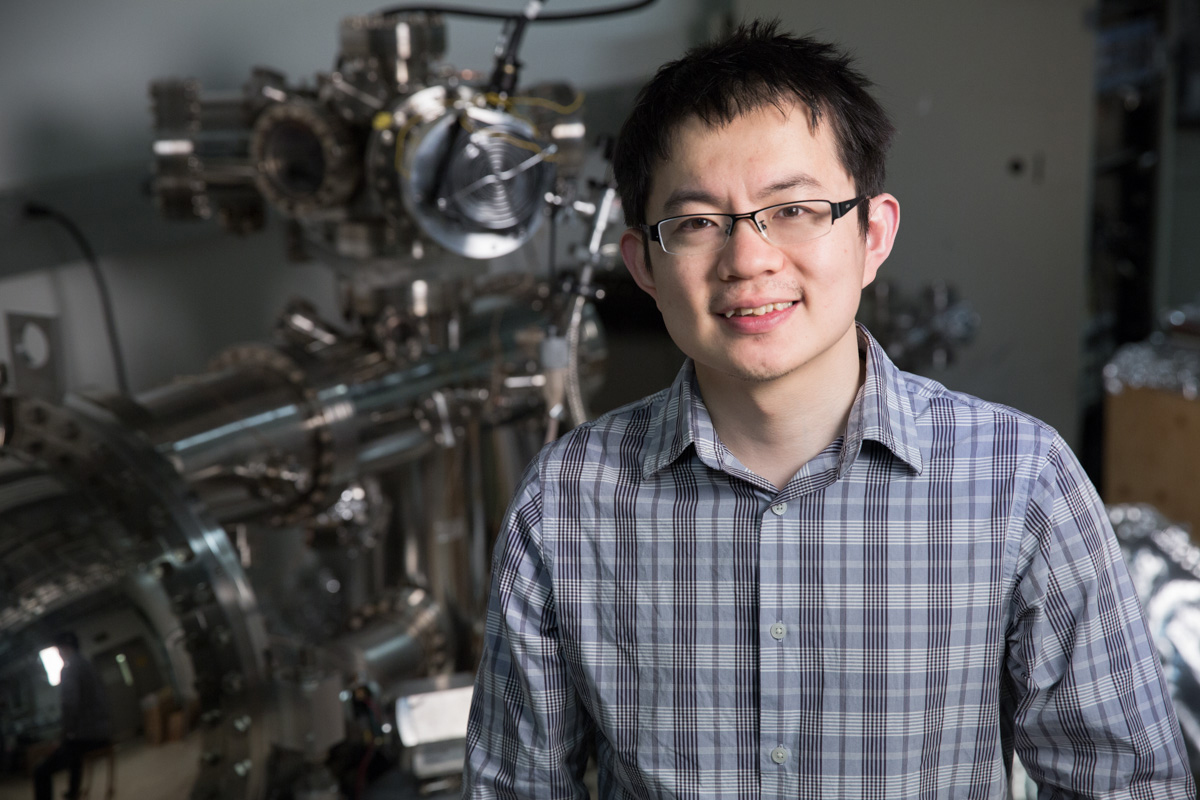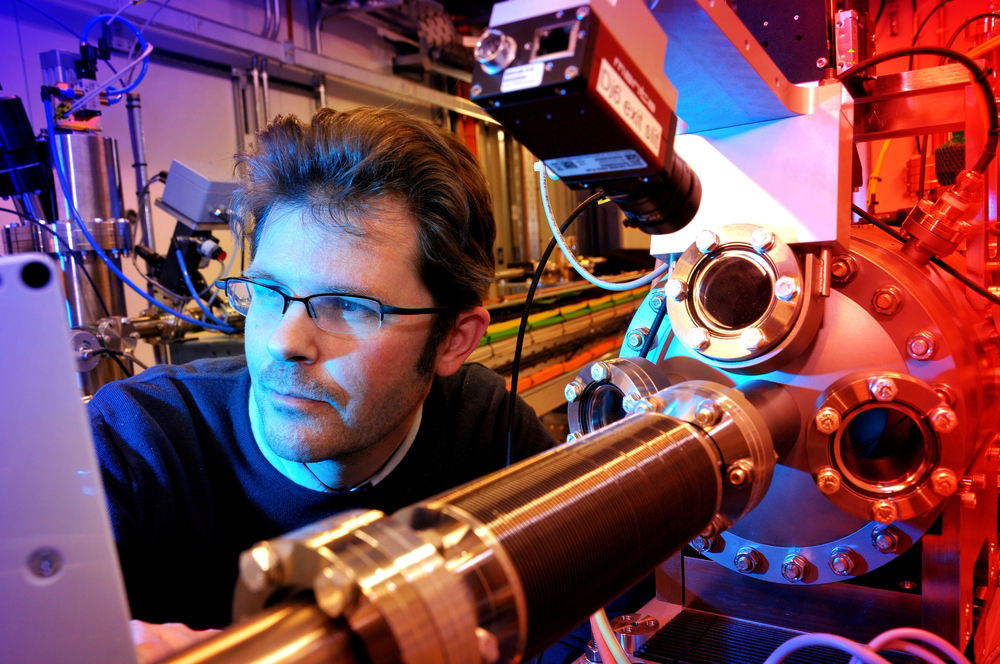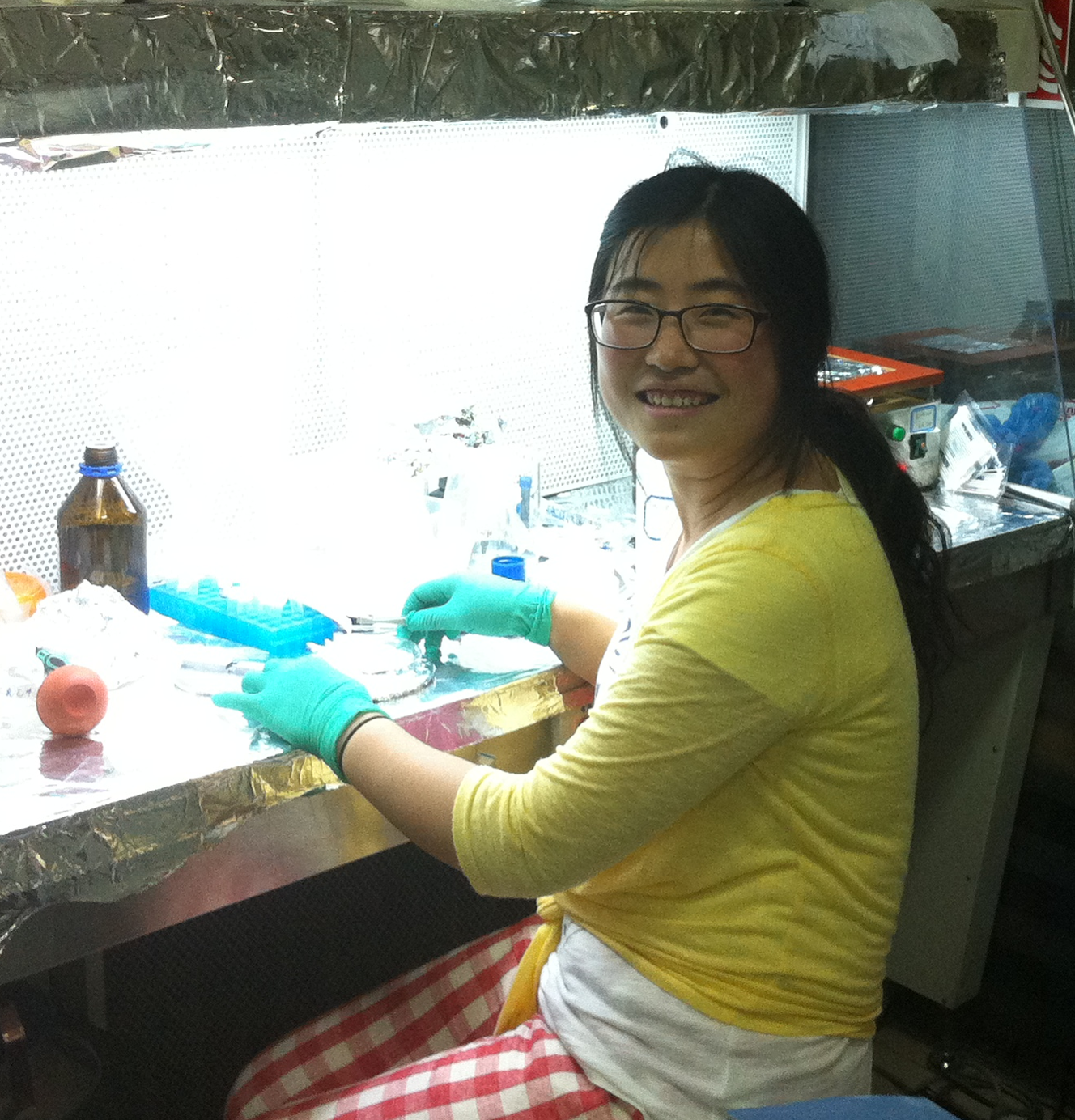
- Zhongkai Liu, a graduate student with the Stanford Institute for Materials and Energy Sciences (SIMES), and one of the key authors on the paper.
- © Diamond Light Source 2014
The super-material can be viewed as a hybrid of the 3D version of graphene and a something called a ‘topological insulator’. This combination leads the electrons in the materials to form a ‘3D Dirac-fermion’, meaning that they behave like photons instead of like regular electrons in normal materials. So the electronic properties in the new substance are different from those in other materials, like in metals such as gold or iron.
This unique collective behaviour of electrons causes them to ‘forget’ their mass, meaning that they can move much faster than electrons in normal materials. In addition to this, the electronic structures also have non-trivial topological properties, meaning that they behave like topological insulators, in which the spin of the surface electrons is locked with their momentum (and thus the electric current) direction. This relationship is a much desired property for the applications of spintronics, a new area of research that looks to exploit both the spin and the momentum of electrons to create more efficient technology.
Together, the combination of the 3D Dirac-fermion and the non-trivial topological characteristic makes this unusual material capable of conducting electricity in a highly efficient way. Furthermore, the material also enables its surface electrons to carry magnetic information through their spin. The substantce is much like graphene but, importantly, it is also 3D, making it easier to use. This hybrid material could thus potentially revolutionise technology, helping us to develop gadgets that are smaller, quicker, and less power hungry.
Yulin Chen, lead author on the project, comments: “With this type of novel materials, we are entering a new understanding of what technology can do. This discovery could be the first step in heralding a new age of superfast and energy-economic electronic and spintronic applications, such as computer chips and hardrives with unprecedented speed and capacity.”
![]()
![]()


